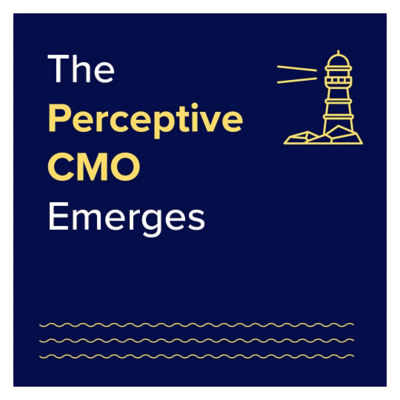Members of both our Merkle Media and CXM teams had the opportunity to attend the AntiCon event, a gathering for forward-thinkers and innovators in the fields of martech, ad tech, and artificial intelligence. We're excited to share our top takeaways, highlighting the key insights and perspectives that resonated most profoundly with us as we look to help our clients prepare for the future of media and customer experience.
Navigating the Future of Programmatic Advertising
(Tanya Tarinayarngkun)
In 2023, Dentsu predicts that 71% of digital ad spending will be conducted programmatically. This paradigm shift reflects growing confidence in programmatic advertising, with 74% of advertisers and 80% of agencies anticipating increased investments in the coming year. At the event, WARC highlights three pivotal trends:
- The demise of third-party cookies and stricter privacy regulations drive advertisers to seek alternative means of targeting and measurement. Strategies such as prioritizing 1P data, fostering data partnerships, contextual and interest-based targeting, and persistent IDs are becoming the new norms.
- The programmatic supply chain remains inefficient, with $20bn out of $88bn spent in programmatic ad being wasted. The average campaign runs on 44,000 websites, with low-quality MFA websites making up approximately 21% of impressions and 15% of ad spend. Efforts to reduce waste and the environmental footprint of advertising are imperative.
- Programmatic media is expanding with the growth of new channels such as CTV and DOOH, offering both opportunities and challenges. As investment in media continues to fragment, advertisers are wrestling with the need to standardize data across these channels, emphasizing the importance of Customer Data Platforms (CDPs).
While the landscape evolves, it is crucial to recognise that not all advertisers are the same. Each situation is unique, demanding a tailored approach. Merkle acknowledges this diversity and is committed to guiding clients through this transformation. We understand the importance of taking incremental steps to enhance programmatic efforts while considering individual circumstances.
The full report from WARC is available to download here.
Advertising in a Subscription World
(Frediano Iannelli)
The symbiotic relationship between consumer, publisher and advertiser has been under threat as subscription-based models have been on the rise for several years. How could publishers appease consumers who pay their hard-earned dollars for access to content? And how could the relationship between advertisers and publishers be upheld when it appeared inventory was to decrease?
The Telegraph has set an impressive foundation for navigating and growing the subscription-based model. They have amassed millions of subscribers since pivoting from their original advertising-first model to a subscription-first model in 2019. Their re-imagined view of digital advertising is something other publishers and even advertisers should learn from.
There are key principles they stand by to ensure their customer base remains happy with the value exchange, whilst advertisers continue to see strong effects from their spent media dollars. These include:
- Know your audience: The subscription model allows for deeper first-party knowledge of customers which improves insight, planning & targeting.
- Paying attention: The Telegraph’s inventory achieves 20% above benchmark viewability ratings (MOAT) with only one ad on screen at once, improving media cost efficiency and allows advertisers to stand out and have stronger share of voice.
- Creativity is key: Ad creative remains the strongest contributor to media performance and advertisers should see inventory as “content space”, not “ad space” to enhance the ad experience for the consumer who is seeing their ad despite payment.
With many media owners introducing subscription-models (namely Amazon and the launch of Prime Video Ads in Q1 2024), Merkle recognises it’s key that media owners make every effort to maintain the strong connections between themselves, advertisers, and consumers. Advertisers can especially flourish with access to deeper first-party data, better ad attention, and access to more premium content.
The Illusion of Choice: Leveraging Behavioural Science for Effective Advertising & Marketing
(Claire Lywood)
In this session, Richard Shotton talked us through the E.A.S.T. behavioural science framework, first developed by The Behavioural Insights Team to support the government communications model, and how the principles could be applied to advertising and marketing communications. Much of this aligned with what we already know about curating effective, impactful customer experiences, with some thought-provoking examples from the market. The principles are as follows:
EASY: It’s more effective to make things easier for potential buyers than to create motivation. Marketers should focus on reducing friction in customer journeys – this can sometimes be ignored in favour of focusing on creating these motivations.
ATTRACTIVE: Brands need to make communications relevant and appealing to their target audience to get noticed. Shotton gave the brilliant example of the Deutsche Bahn “No Need to Fly” campaign. Rather than using “standard” imagery of popular destinations, they used technology to find locations in Germany that had striking similarities to some of the world’s most sought-after locations to harness attention and communicate that travellers don’t need to leave the country to experience unforgettable scenery.
SOCIAL: People are influenced by what they perceive other people do or think. If you say your brand, or the sub-category your brand is in is used by a lot of people, it will become more popular and appealing. This means that implication of popularity or social norms can actually be more powerful than stated facts.
TIMELY: Marketers should look to target based on mood. Shotton cites a study by Bronner in 2007 that found that not only was attention and ad recall higher when the audience were in a better mood, but believability was also 61% higher.
Play to Engage: Unleashing the Potential of Gamification in Marketing
(Claire Lywood)
This session, led by Libby Jackson from Playable, focused on the power of gamification to improve metrics across attention, engagement and conversion and some key principles for planning out these experiences.
Jackson argued that play is the most ordinary human instinct and called out four elements of the power of gamification for helping marketers build more meaningful relationships:
- First screen attention: minds enter an active and alert state.
- Dose: play triggers our brains to release feel-good hormones, leaving a lasting impression.
- Memorability: games allow audiences to enter their world, building memories.
- Hardwired: taps into our natural instinct to have fun, compete and be rewarded.
Games are a way to build positive association and unique brand experiences. They can foster shifts in behaviours, for example in openness to data sharing. Jackson called out a recent study Playable conducted with YouGov which found that consumers on average thought they’d be 56% more likely to click a gamified ad than a non-gamified ad, but in reality, this was 70% once they’d engaged. It’s interesting to note too, that consumers want to earn their rewards: they’re more likely to share first-party data after playing a game that requires some skill or effort than a game that is random luck.
The final takeaway from the session was the variety of ways in which games can be integrated into a brand experience. From product finder quizzes to video game style challenges, it’s important to find the right experience for the brand that will resonate with the target audience.
Building the future-ready organisation
Overall, our attendance at the conference was a valuable experience for us all. There were great insights shared into how to help our clients build future-readiness into their organisations, as well as their media and advertising relationships. It’s clear that to be ready for the short- and long-term future the leading brands will need to invest in the right digital trends and technology. To discuss how Merkle can help your business get ready for the future, please get in touch.




